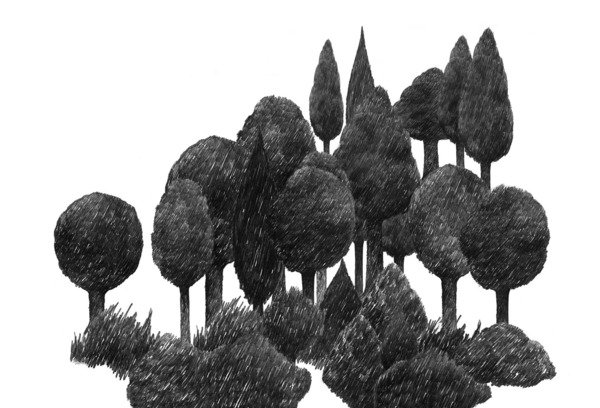Stephanie Nava
dal 8/11/2010 al 27/11/2010
Segnalato da
8/11/2010
Stephanie Nava
La Box - Ecole nationale superieure d'art de Bourge, Bourges
The Numerous Forest. Nava's resources - drawing, sculpture and images - are tools fuelling a practice directed at analysis and depiction of the individual's relationship with his circle and his environment. Her exhibition at La Box takes the form of an installation, a structuring of recent works most of which date from 2010 and have not been shown in France before.

Stéphanie Nava's resources – drawing, sculpture and images – are tools fuelling a practice directed at analysis and depiction of the individual's relationship with his circle and his environment. And this in many different registers: social, political and economic milieux, love, shared living space, and venues for linguistic exchange. Private or public, real or fictive, the different settings for these links coexist in her work as territories to be explored, as codes and styles of functioning to be deciphered.
Her exhibition at La Box takes the form of an installation, a structuring of recent works most of which date from 2010 and have not been shown in France before. Always thinking in terms of ongoing projects, Nava chooses her titles with great care, each being a trigger for a work programme. Thus À Partie Liée (Connected) is a series of drawings begun in 2007 in which the city (shared space) and its architecture (a powerful tool for urban organisation) are looked at as a theatre where the residents are on stage. Apartment, building, street, shop, cinema – these are spaces constructed and lived in at different moments and which, transferred onto paper, overlap and intercommunicate. Their structures, whether overt or implicit, are revealed by the drawing process.
Les Caducs, les Persistants, les Délaissés (The Deciduous, the Evergreen, the Forsaken, 2010) draws on the vegetable kingdom for a wall installation, a kind of musical score visitors can play by displacing various objects – chair, lamp, drawer, small house – on rails. In this way new configurations and novel associations are created within a work making clear reference to the domestic setting and to items we handle every day. These items – old or new, religiously preserved or rapidly replaced, forgotten, lost or signficant – proliferate in our lives, prompting all sorts of actions, situations and memories.
Tectonique du Désastre Amoureux (Tectonics of the Lover's Disaster, 2010) is a mental landscape whose scale could be that of furniture, an architect's model or a government survey map in three dimensions. The territories of the lover's discourse emerge as a kind of archipelago whose underpinnings are yielding, like rubber, or rigid, like sections of tree trunk. A forest motif nestles among tranquil plains and wild geological folds, rugged zones and sediments, gentle curves and sharp angles.
Dominique Abensour
Opening Tuesday 9 November, 6pm
La Box - Ecole nationale superieure d'art de Bourge
9, rue Édouard-Branly, 18006 Bourges cedex
Open from Tuesday to Saturday
from 2 pm to 6 pm.
On Mondays by appointment



